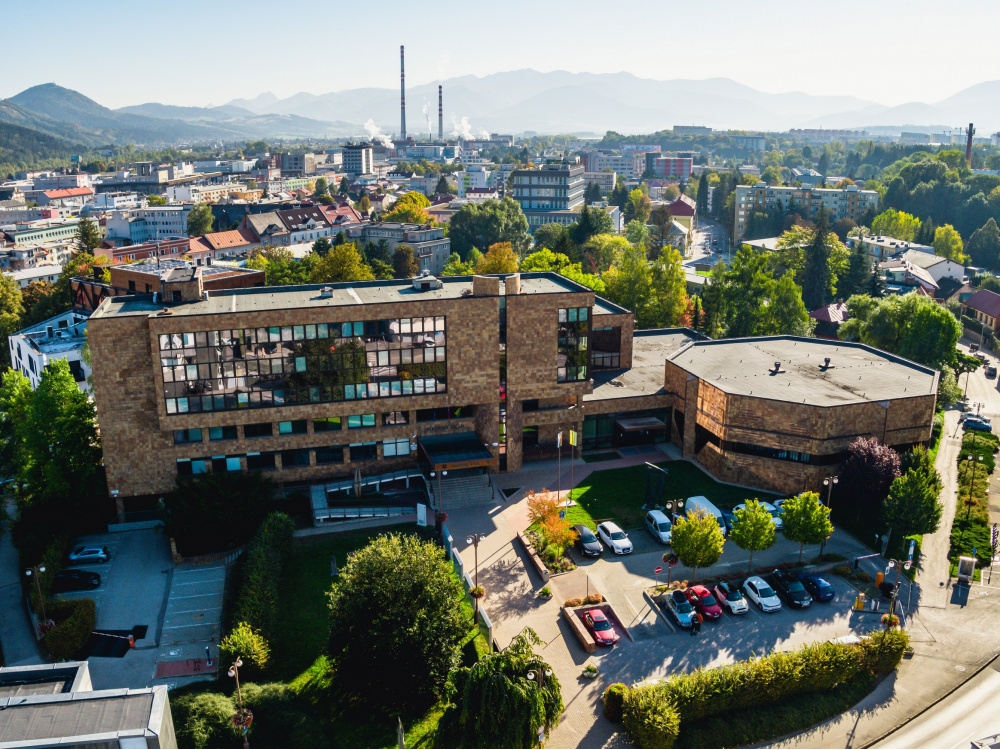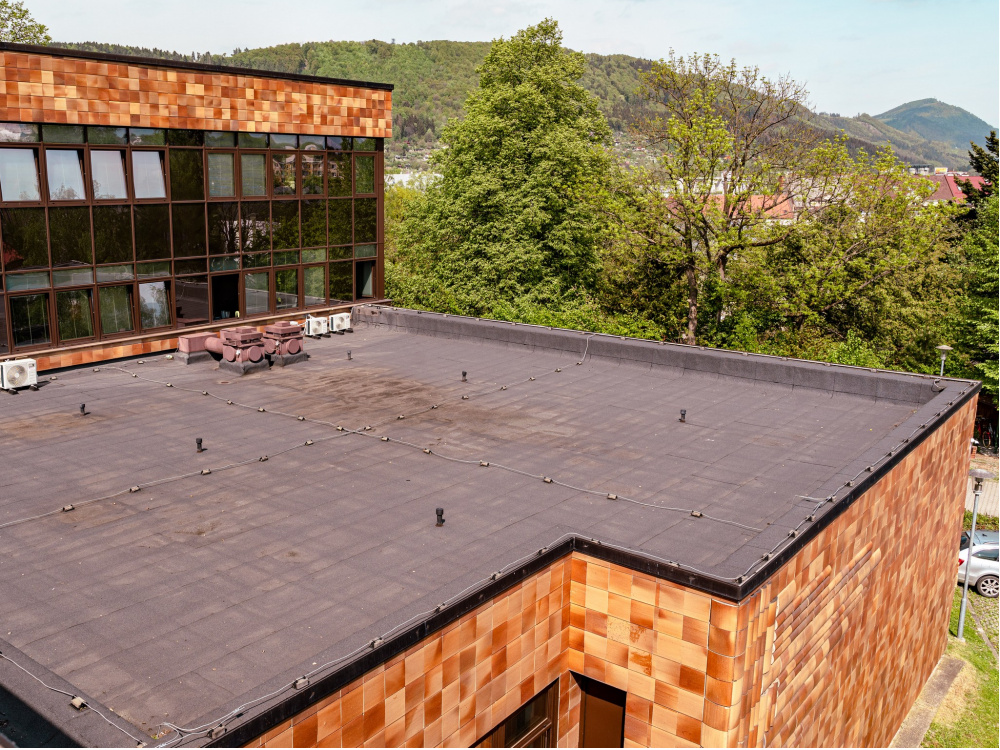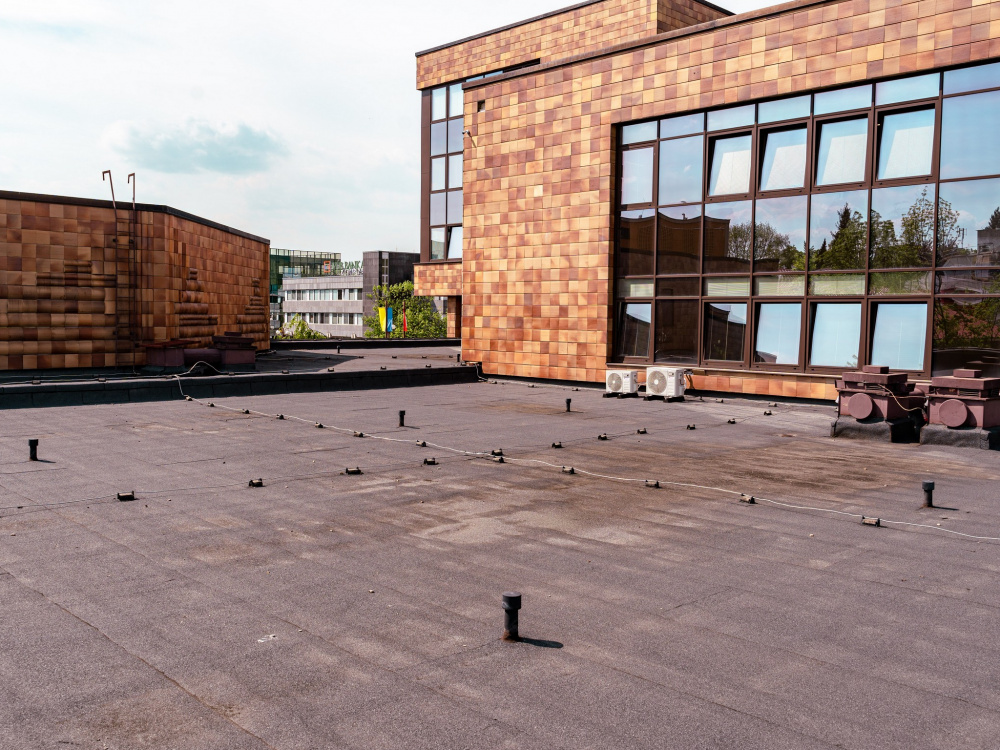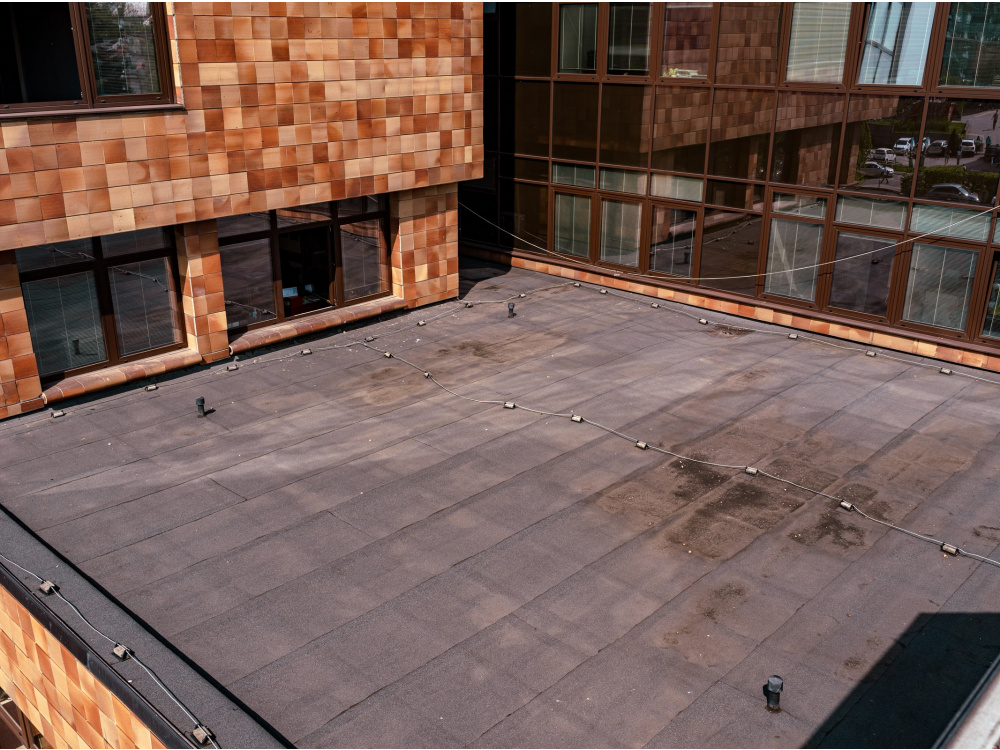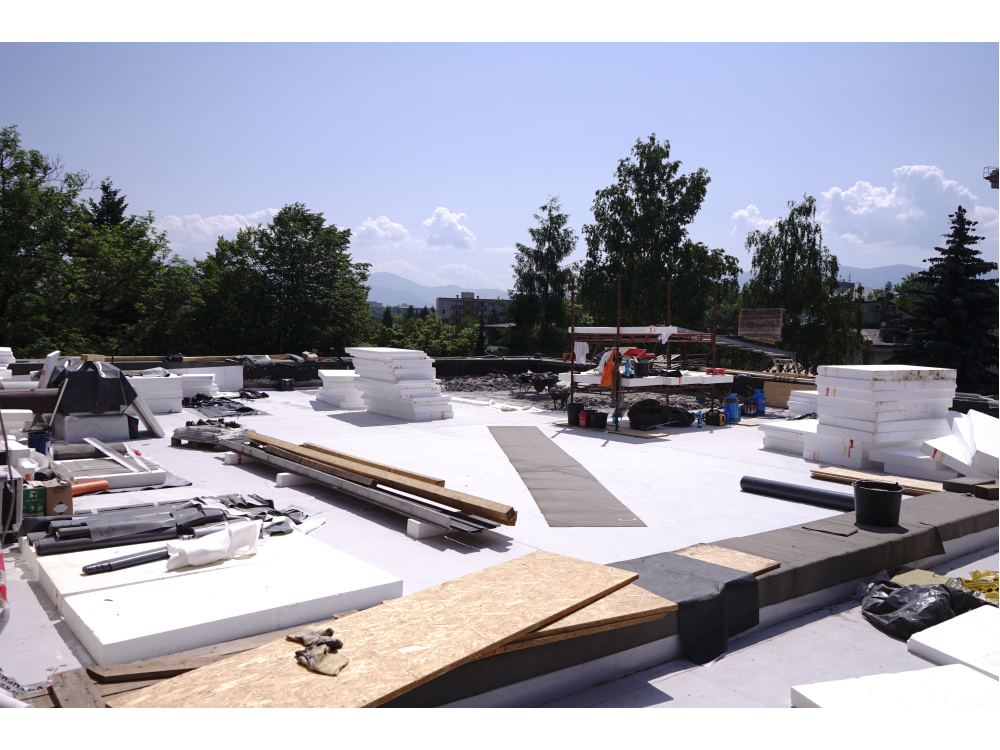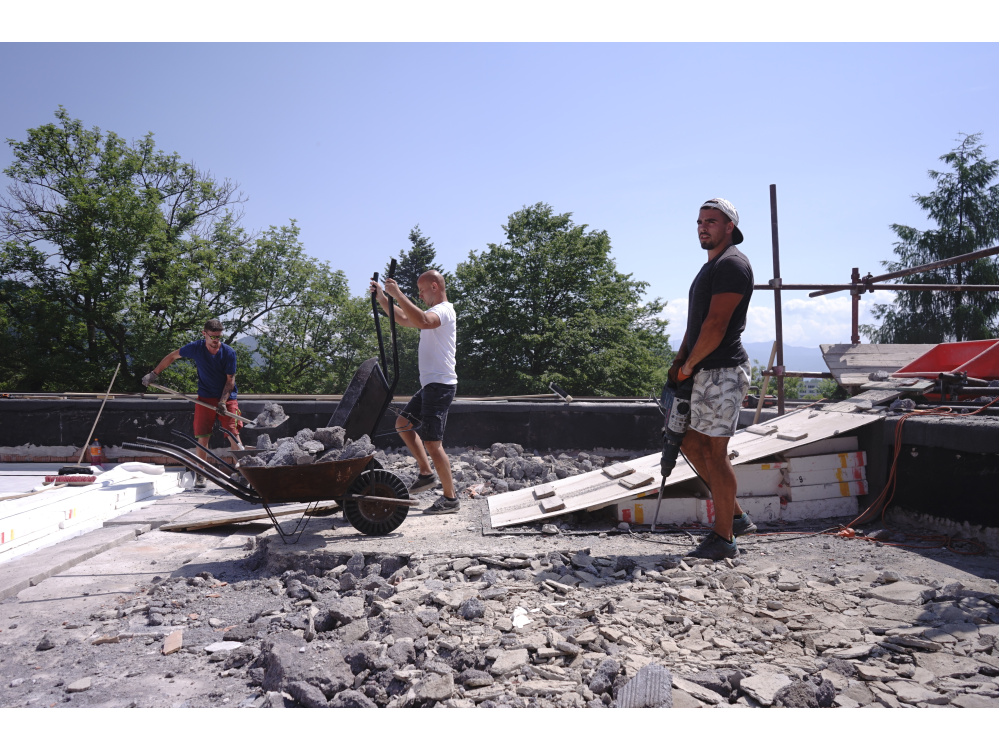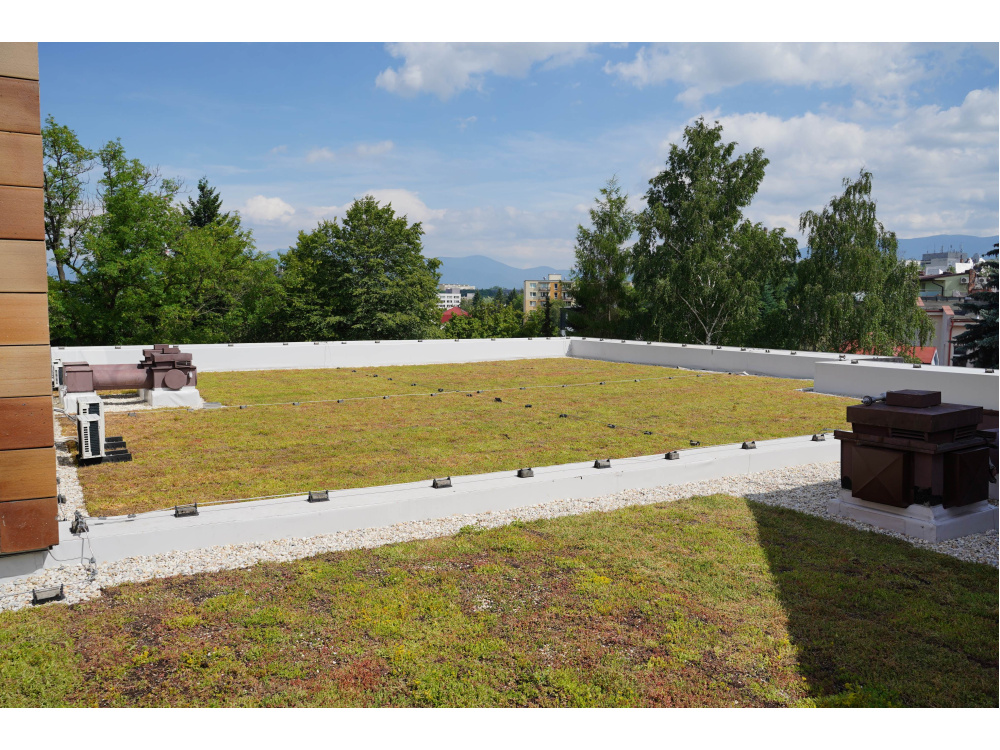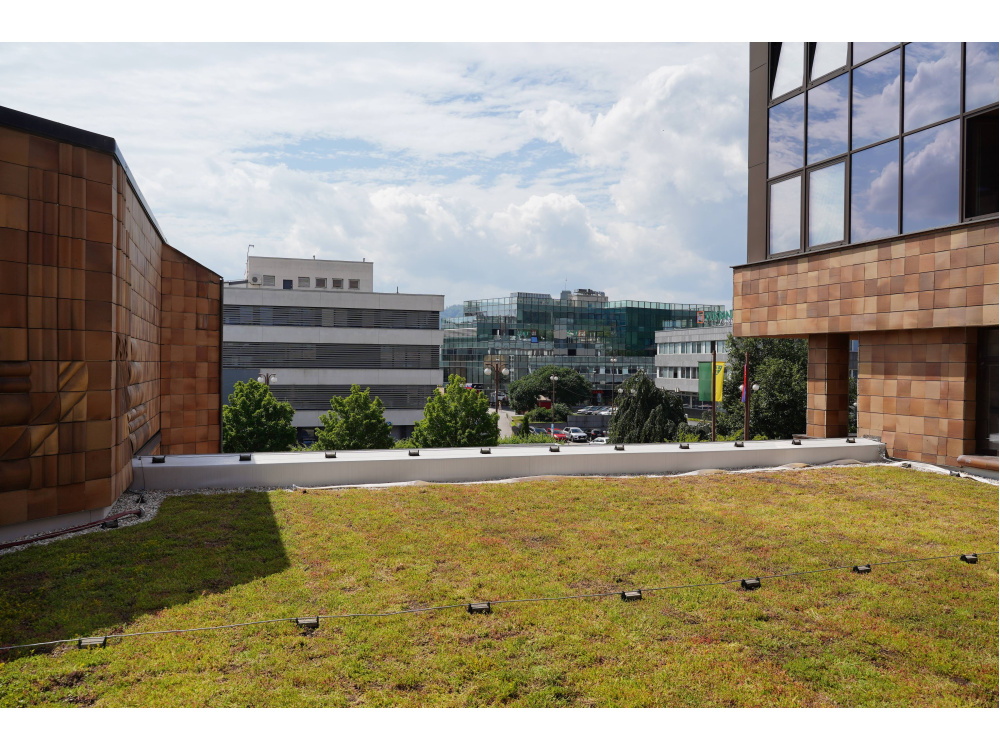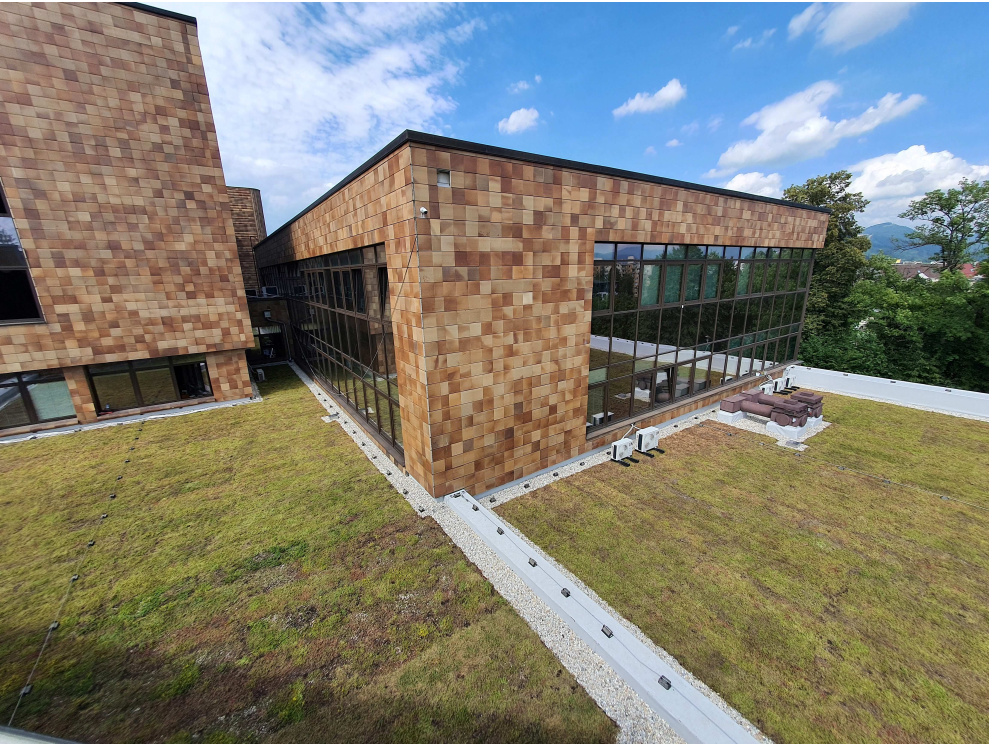Green roof of the Municipal Office
Green roofs are one of the adaptation measures that bring a more pleasant climate to cities and make them more resilient. The production of oxygen, binding of dust and filtration of pollutants from the air, water retention in the city, cooling of the climate, dampening the noise of the surrounding environment and, last but not least, the aesthetic appearance of the roof are some of the positive arguments in favor of the implementation of a green roof with regard to environmental protection.
The city of Žilina plans to implement such green roof in 2022 on the existing flat roof of the Municipal Office in Žilina in its one-story part.
The building of the Municipal Office in Žilina, built in 1984, is an architecturally significant building, for which its author, architect Viera Mecková, won the prize of the Association of Slovak Architects in 1988. The facade of the large building consists of not only industrially produced tiles, but also atypical sculptural works designed by artists.
The construction project addresses the design of new roof layers to align them with the requirements for thermal resistance and heat transfer coefficient according to current standards. The existing roof cladding currently does not have sufficient thermal resistance in addition to the poor drainage of the roof waterproofing layers. The requirement for thermal resistance and heat transfer coefficient is not met, reaching only 57% of the required value. Vegetation layers and extensive vegetation with dry-loving plants will be implemented on top layer of the waterproofing. In addition, the substrate together with the plants will protect the roof structure from extreme weather conditions, preventing direct exposure to sun and frost.
In addition to protecting against temperature fluctuations, the vegetation layers will retain rainwater, thereby reducing the amount of rainwater discharged into the sewer system. The vegetation, by retaining water and dust, promotes a healthy microclimate, its implementation will solve the problem of ventilation of the adjacent office premises, whose windows are oriented towards the roof. This also eliminates the problem of asphalt odor during hot days. The dismantling and subsequent installation of a lightning conductor, including its revision, is also part of the construction works.
Implementation of vegetation layers will provide increased protection of the interior from cold respectively overheating in summer, a reduction of heating and cooling costs, increased fire protection of the building (roofs are classified as non-combustible) or an increase of the value of the building.
 Slovak
Slovak


